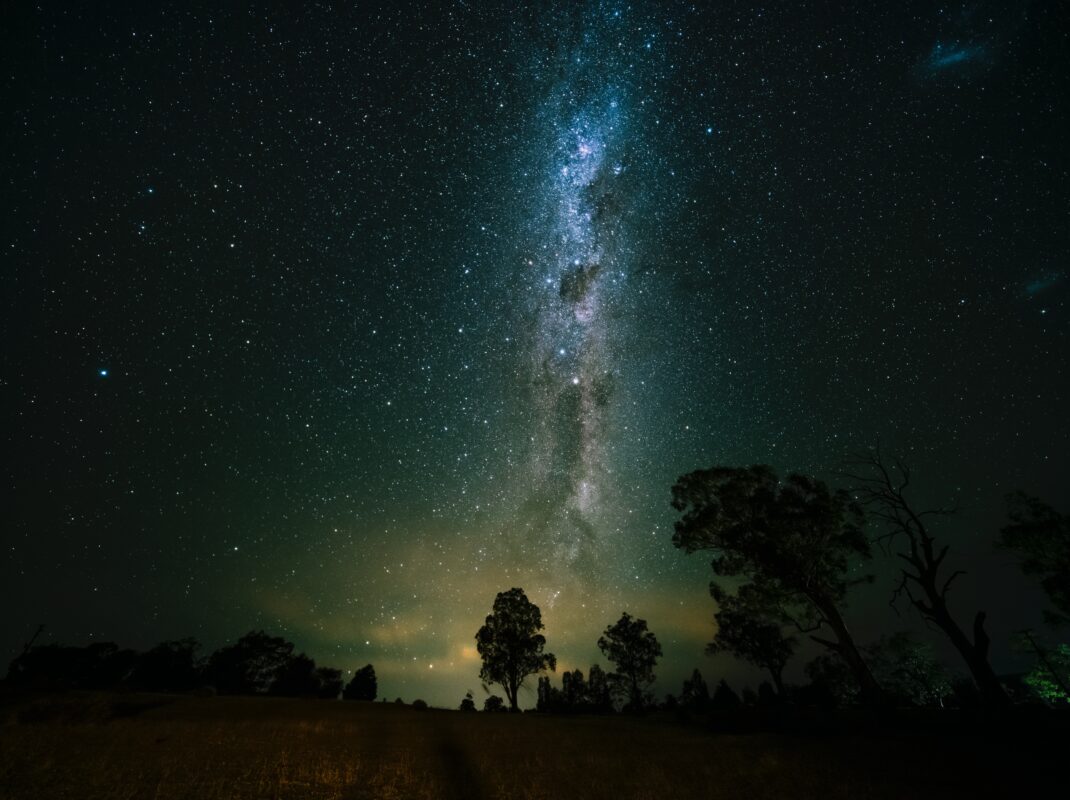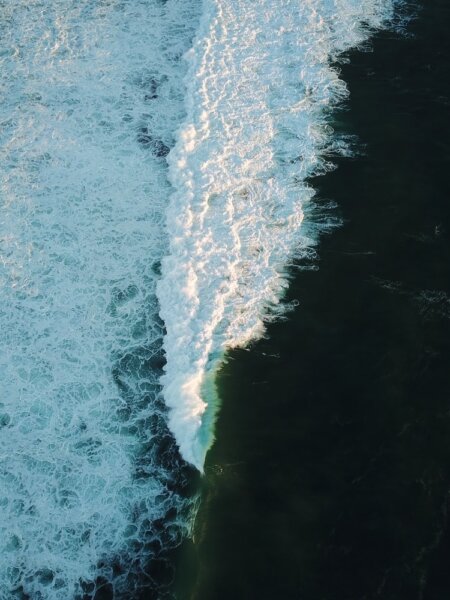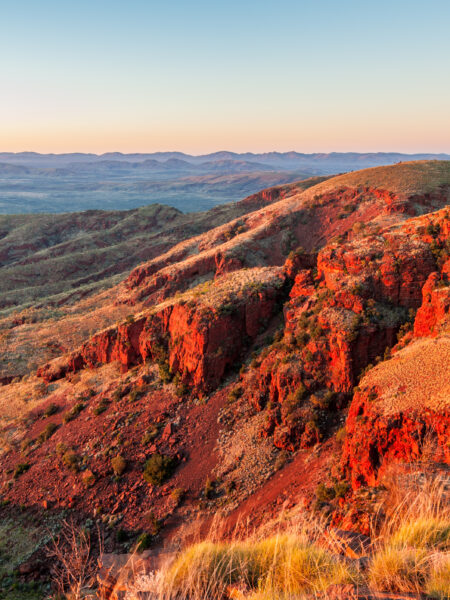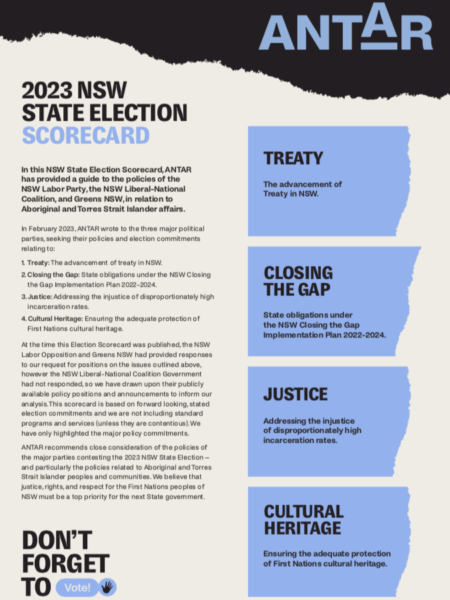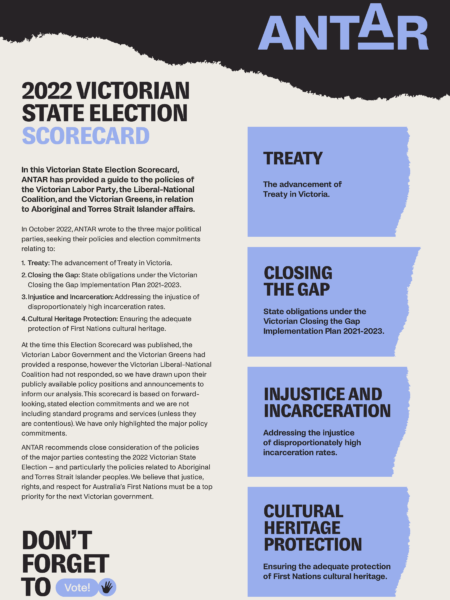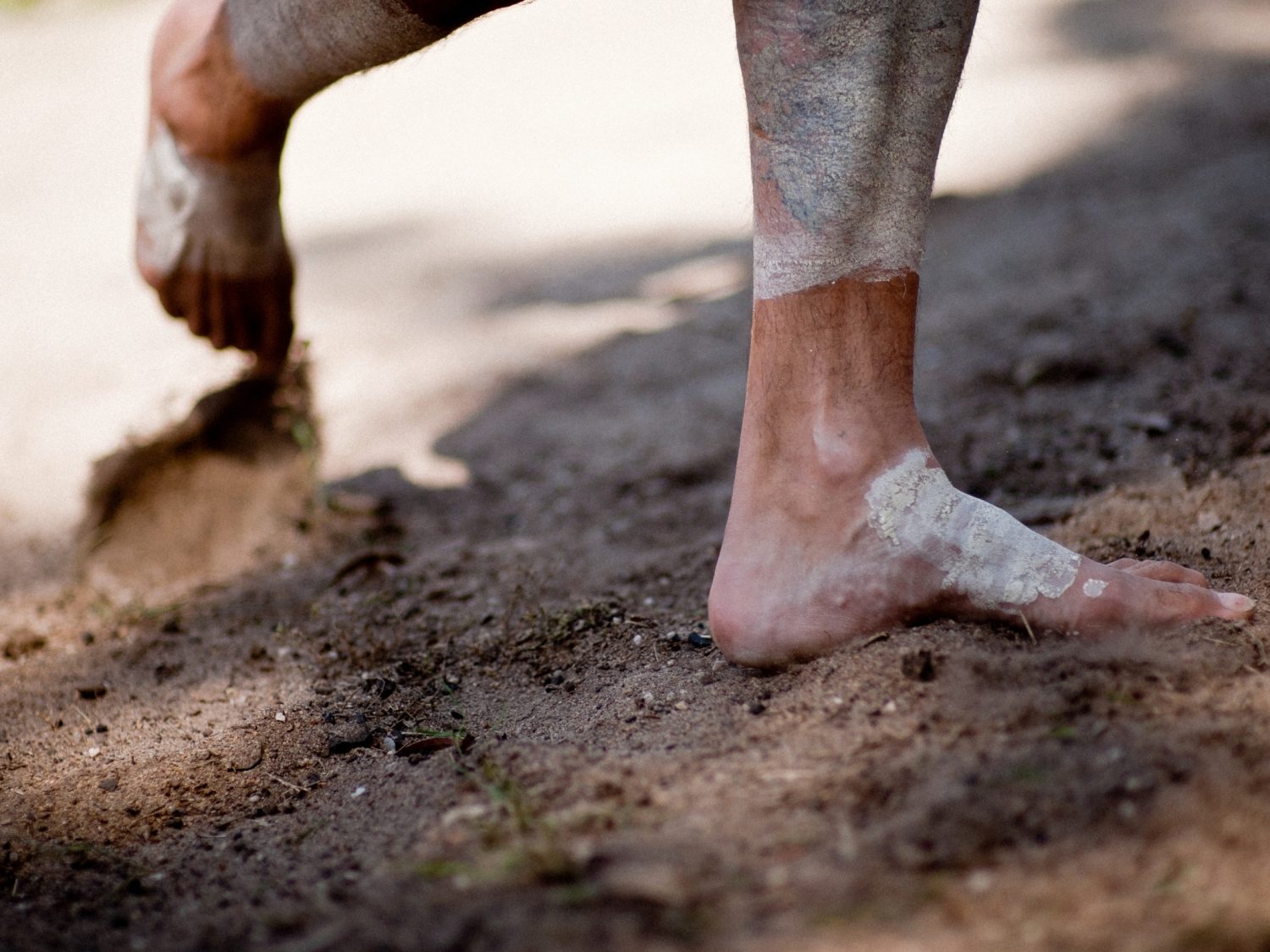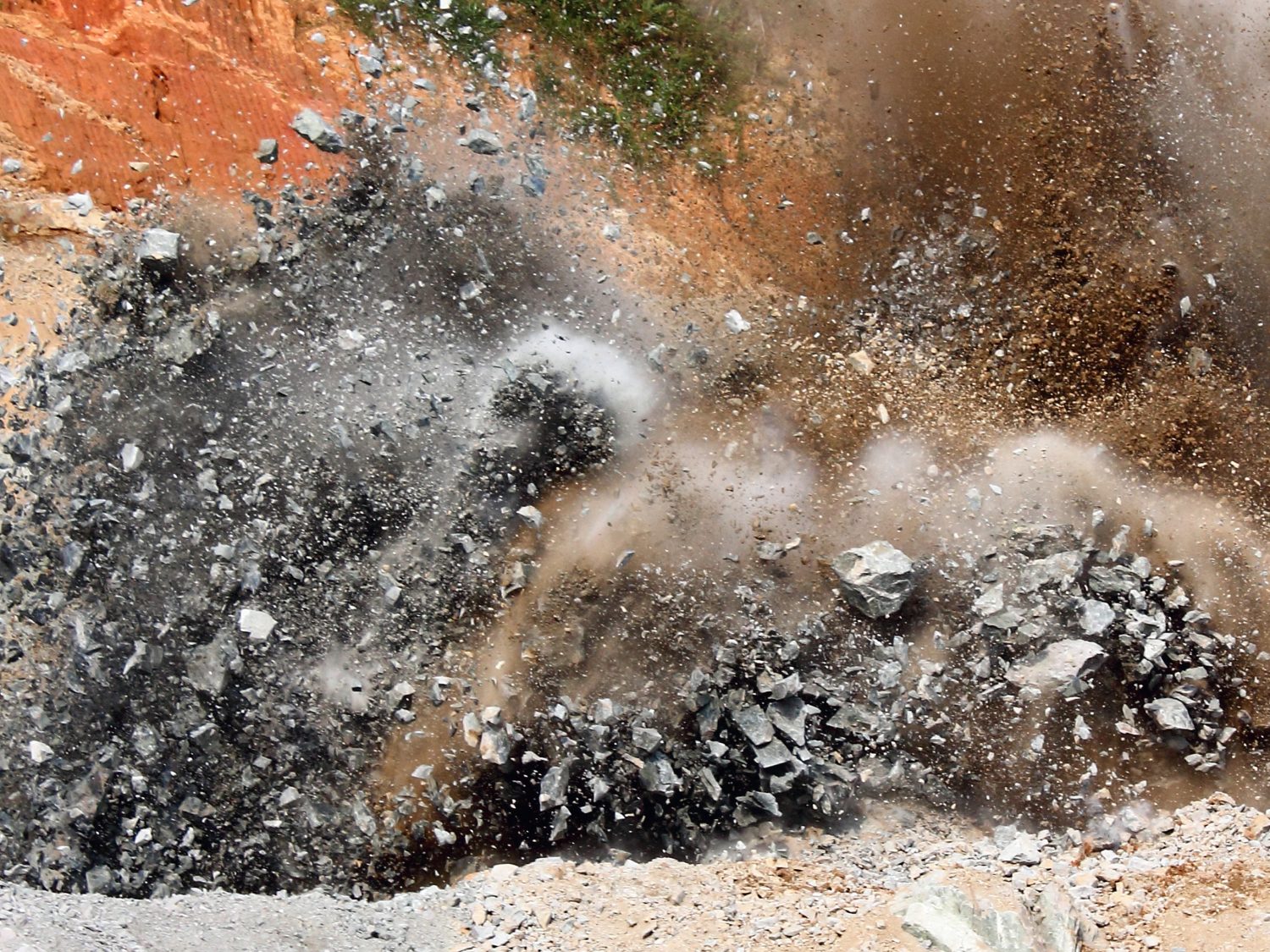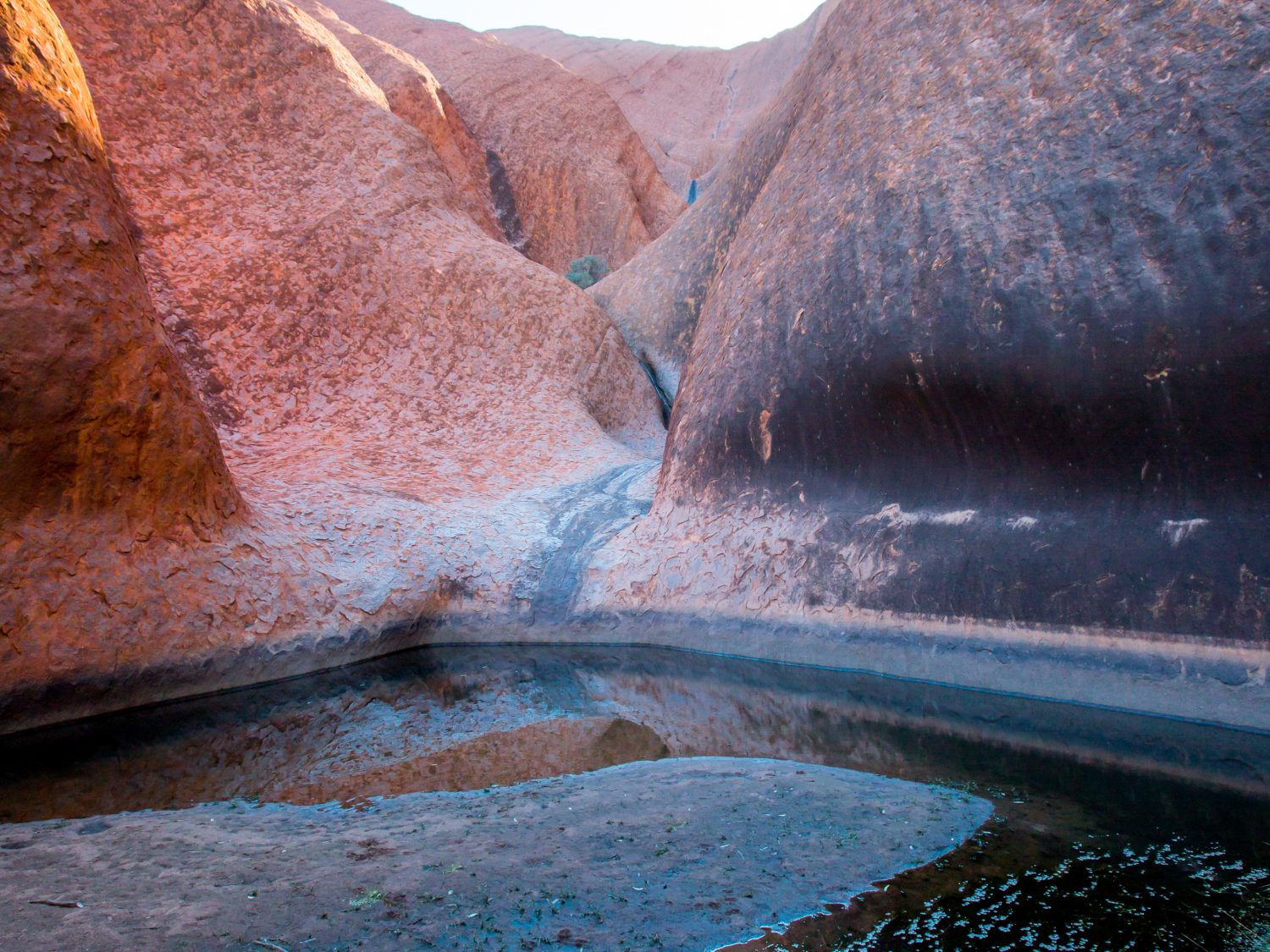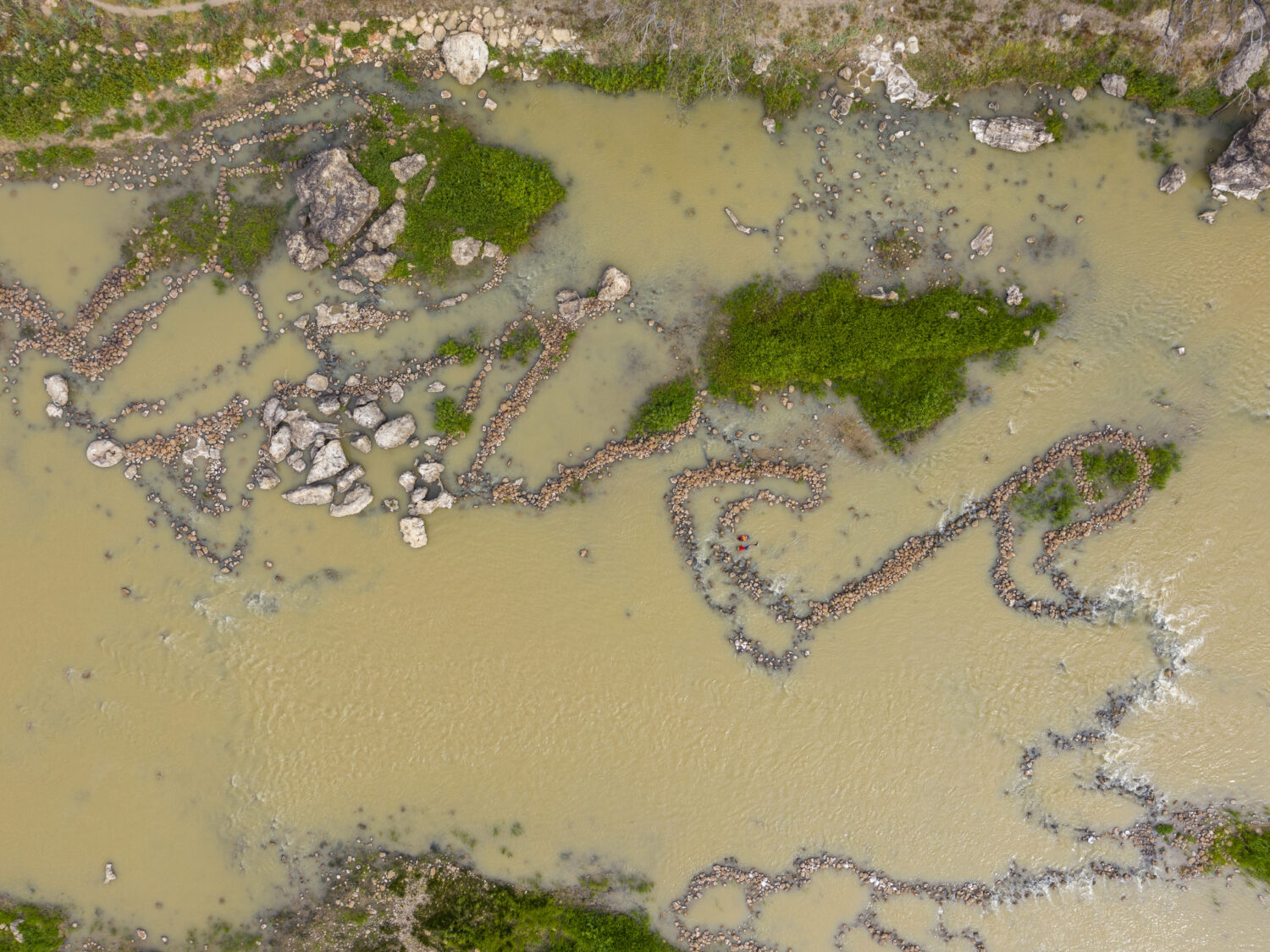It is a region of spectacular natural beauty with tourism a key industry. One of the outcomes of the environmental battle in the late 1970s to save the Franklin Dam resulted in the World Heritage listing of the Tasmanian Wilderness World Heritage Area (TWWHA). It is only one of three Australian World heritage sites acknowledged as significant to First Nations people – the other two being Kakadu and Uluru-Kata Tjuta National Parks. The TWWHA is one of the world’s great archaeological sites containing many Aboriginal sites, of particular note, the hand stencil and rock art sites. Currently about 20 percent of the State is under some form of national park or reserve status.
BACKGROUND
Like its fellow former colonies across Australia, Tasmania has a very dark history of frontier conflict from the beginning of British colonisation. The penal colony had been set up in 1803 as a means of ensuring British dominion over the whole of the Great South Land. Tasmania is the only state to have an ‘official’ record of declared war against the ‘blacks’, a systemic regime of dispersing or eliminating the Tasmanian Aboriginal (Palawa) peoples. In 1828, Governor George Arthur declared martial law and within a year the previous decades of spasmodic guerrilla war had virtually ended. The population of Palawa people estimated at 4000 at the start of colonisation was estimated to have been reduced to 139 people by 1891.
The particularly brief (by comparison with other parts of the continent) but brutal dark and long silenced history of colonisation in Tasmania from 1803 still reverberates today. As recently as 1983, the State government, whilst addressing issues of the TWWHA, claimed that the Kut Kina Cave (of global archaeological importance), could not be of significance to Aboriginal people because Aboriginal Tasmanians were extinct (p16). The current battles for recognition and protection of the ancient, and continuing, cultural heritage of the Tasmanian Palawa peoples must be viewed through this historical lens.
Timeline
Unless otherwise indicated the Timeline entries below are sourced from, Pathway to Truth- Telling and Treaty.
- 1973: The Aboriginal Information Service is established as the first Aboriginal organisation in Tasmania.
- 1975: The Aboriginal Heritage Act (Tas), prior to 2017 known as the Aboriginal Relics Act, is the primary legislation governing cultural heritage in Tasmania.
- 1976: Truganini’s remains are returned (from Britain) and cremated. Her ashes were scattered in the D’Entrecasteaux Channel
- 1977: Senior Palawa leader, Michael Mansell and others set up an Aboriginal Parliament outside Parliament House and presented a petition demanding return of lands.
- 1984: The Museums Aboriginal Relics Act (Tas) is passed to facilitate the return of Tasmanian Museum Art Gallery’s Crowther Collection to Tasmanian Aboriginal people.
- 1995: Aboriginal Lands Rights Act (ALRA) . This is key legislation providing for return of land and its management. It established a statutory body, the Aboriginal Land Council Tasmania (ALC Tas) which is responsible for use and sustainable management of Aboriginal land. Claims to land and waters are managed via the return of land or collaborative management processes.
- 2012: Aboriginal and dual naming policy unveiled.
- 2015: The Tasmanian Government announces a policy to reset its relationship with First Nations communities; the Tasmanian Regional Aboriginal Communities Alliance is established with membership from seven incorporated organisations.
- 2017: Aboriginal Heritage Act Amendment, established the Aboriginal Heritage Council as statutory body; limited other changes (‘offensive nomenclature ‘Relics’ removed, range of increased penalties for damage); set out timeline for major Review of Aboriginal Cultural Heritage. Aboriginal Heritage Council of Tasmania advises the Tasmanian government, land managers and owners on the protection and management of Aboriginal cultural heritage in Tasmania. It examines Aboriginal heritage permit applications and makes recommendations to the Minister for Aboriginal Affairs on whether these should be supported.
- 2021: Three significant actions on the part of the State government:
- Publication and call for community responses to Review of the Aboriginal Heritage Act 1975 (March 2021);
- Publication of Pathway to Truth-Telling and Treaty (Nov 2021), produced by a team of experts who consulted widely with First Nations communities;
- The Tasmanian Implementation Plan for the new National Agreement (Closing the Gap 2021-2023) is tabled.
What’s happening now?
Trawtha Makuinya is a site purchased by the Aboriginal Land Council in 2012 with financial assistance from the Federal Government’s Caring for Country fund. It is an area of significant conservation values, ancient Aboriginal and world heritage values, and it adjoins the Tasmanian Wilderness World Heritage Area. The Trawtha Makuinya Healthy Country Plan shows the vision of Palawa Tasmanians for the future when genuine collaboration is practised. Clyde Mansell, Chairman of the Aboriginal Land Council of Tasmania, describes Trawtha Makuinya as a milestone for reconciliation in Tasmania
The Tasmanian Aboriginal Community has never before witnessed collaboration of this nature in Tasmania. This property carries a virtually uninterrupted cultural landscape, which provides evidence of the past tracks used by our ancestors.
In 2021, the Tasmanian Government reiterated its intention to reset its relationship with First Nations communities. Areas identified for action included:
- A new approach to Aboriginal eligibility;
- Focus on Tasmanian Aboriginal history and culture in the delivery of the Australian curriculum;
- Constitutional recognition of Tasmanian Aboriginal people and exploration of joint land management arrangements; and
- Increased efforts to close the gap in disadvantage between Tasmanian Aboriginal people and the wider community.
Additionally, a draft Exposure Bill for a new Aboriginal Cultural Heritage Bill is expected early in 2023.
Sites of Concern
Land rights
It is estimated that less than one percent of Tasmanian land has been returned to Aboriginal communities (similarly only about 1% of land in NSW is Aboriginal owned). This equates to approximately 55,617 hectares of culturally and historically significant Crown land returned to the Aboriginal communities since 1995.
As noted above the Aboriginal Lands Rights Act (1995) provides the most scope for self-determination and land rights, as Native title possession is not accessible to First Nations Tasmanians due to their historical dispossession. The Government claims that return of more land to its original custodians forms a crucial part of the Tasmanian Government’s Reset Agenda. Most of the sites returned occurred in the decade from 1995-2005. The Aboriginal Land Council (ALC) has been increasingly frustrated by the government’s apparent stalling of its policy. At a 2020 meeting with the Premier, Aboriginal Land Council Chair, Michael Mansell said he was ‘encouraged’ by discussions on land hand-backs. However, none of that optimism is evident in a subsequent March 2022 Media release statement from the ALC Chair.
As outlined in the Pathway to Truth-Telling and Treaty, underlying this impasse are manifold complexities and conflicts of interest between Government and the Aboriginal community, including:
- Justice, reparation and compensation for past injustices;
- Unresolved controversy as to First Nations identity and its impact on land rights eligibility;
- Legal status of ownership of World Heritage land;
- Finding the balance between cultural heritage protection and economic development; and
- Structural challenges of implementing joint management between parties.
palawa kani – Reconstructed Tasmanian Aboriginal language
There were about 12 languages spoken in Tasmania at the time of British colonisation, none of which survived the devastating impact. The reconstruction of palawa kani since the early 1990s has been possible ‘thanks to the committed work of the Aboriginal community’ and to the fact that word lists had been recorded by over 20 different European recorders.
The authors of Pathway to Truth-Telling and Treaty recommended that support be given to Aboriginal organisations to assist with projects to compile word lists. Rather than reconstructing any specific local language, it is suggested that these word lists be used in combination with palawa kani as the base language and that the Tasmanian Aboriginal Centre be encouraged to allow this to happen. The original 200 words from the early 1990s has grown to approximately 900. UNESCO has proclaimed 2022-32 as the decade of Indigenous languages. Read a fuller account of the history of loss and the emerging reconstruction of palawa kani here.
Take Action
Listen / Watch / Sign petitions / Write letters to MP’s as guided.
Write to the Tasmanian Premier and Minister for Aboriginal Affairs to urge the Tasmanian government to proceed with the Recommendations of Pathway to Truth Telling and Treaty, and to make a timeline for resolution of the stalled Land Rights Return process. We suggest that in your correspondence you refer to these key principles:
- Recognise Traditional Owners as authorities at the table at the beginning of any application for development on lands owned by First Nations communities;
- There is a need for an overarching Commonwealth legislative framework;
- Reform must be based on the heritage standard already agreed to;
- Reform must adhere to relevant articles of the United Nations Declaration of Indigenous Rights (UNDRIP); and
- Reform must find the balance in the battle between economic development and preservation of cultural heritage.
